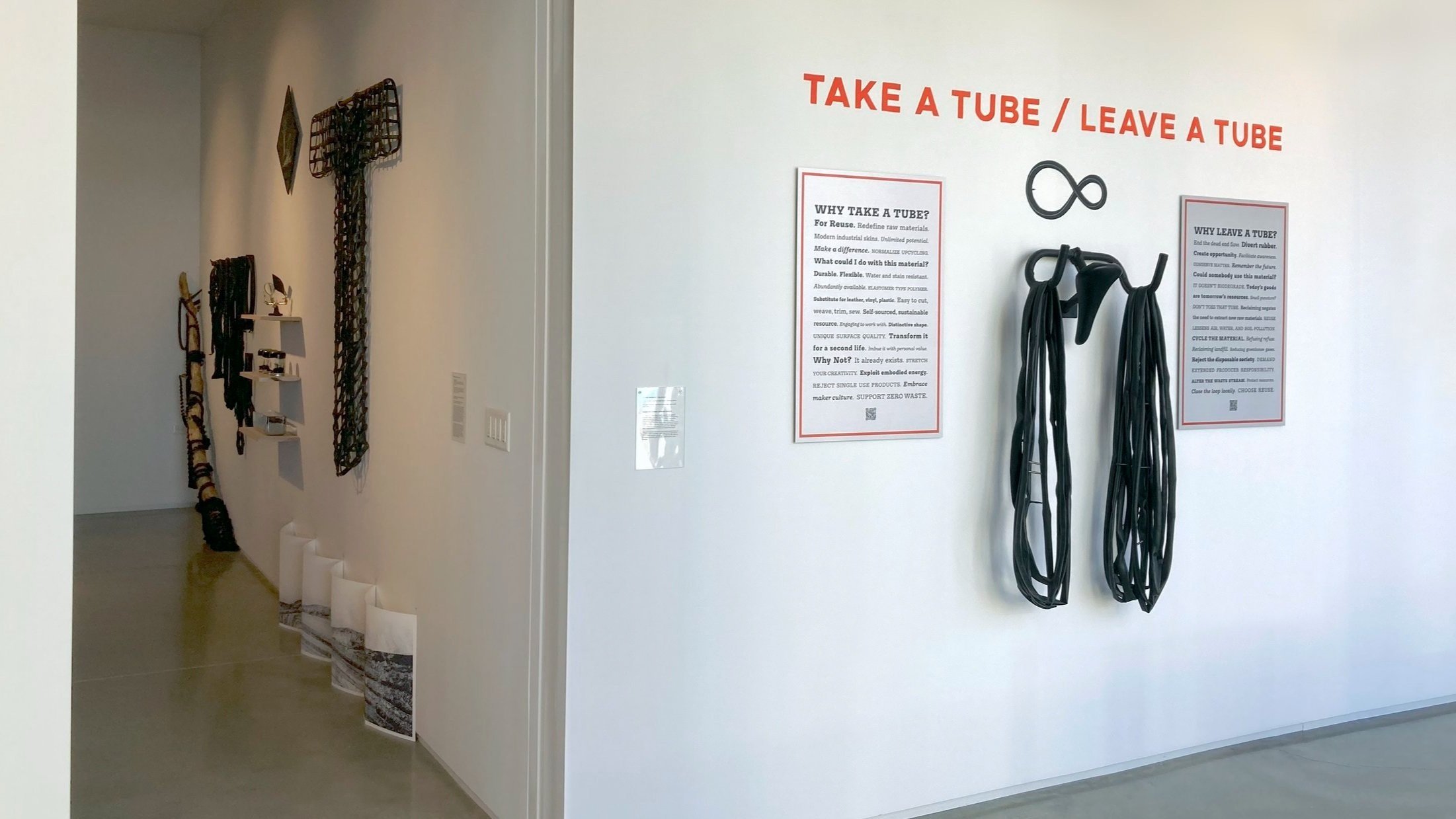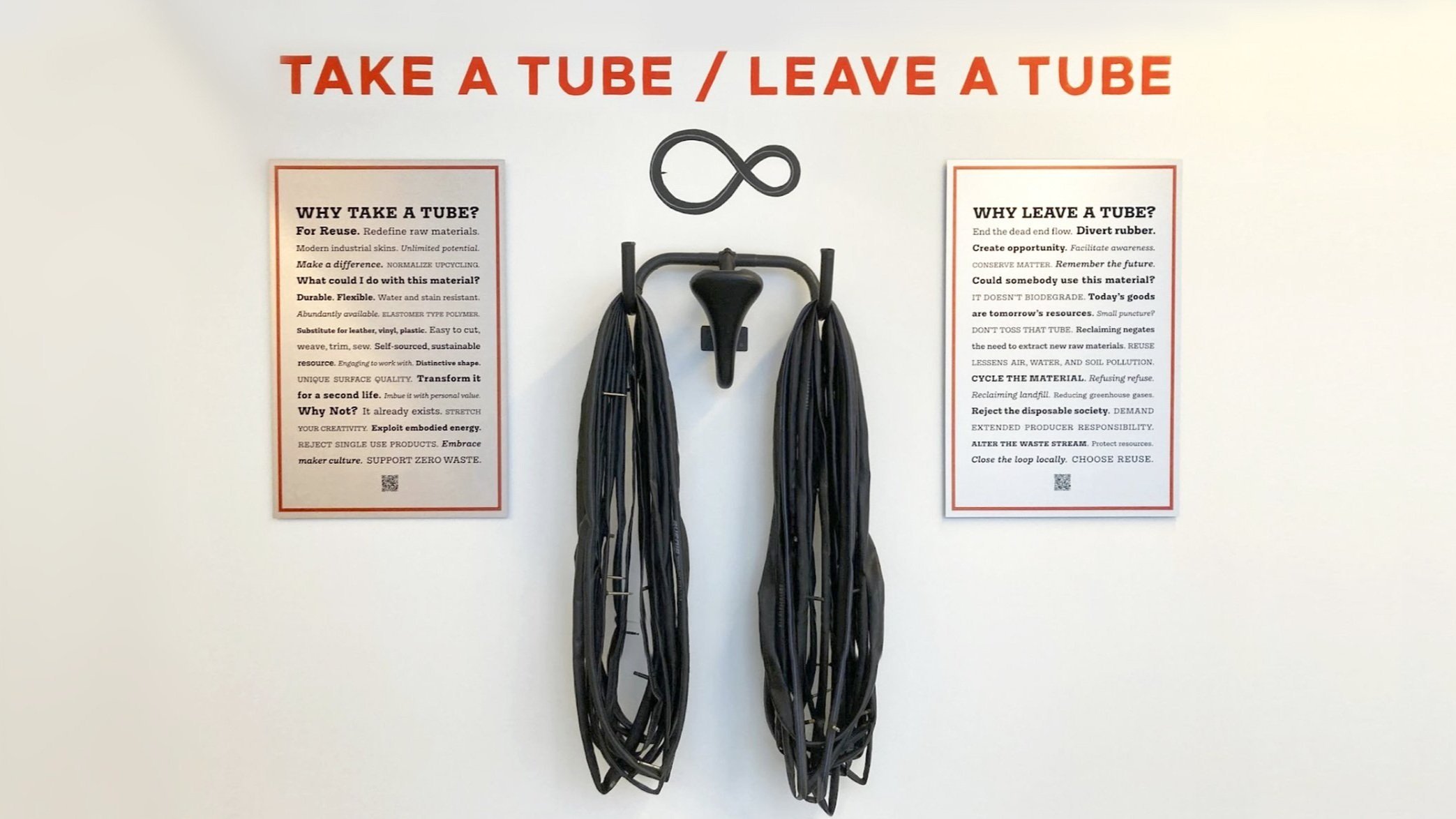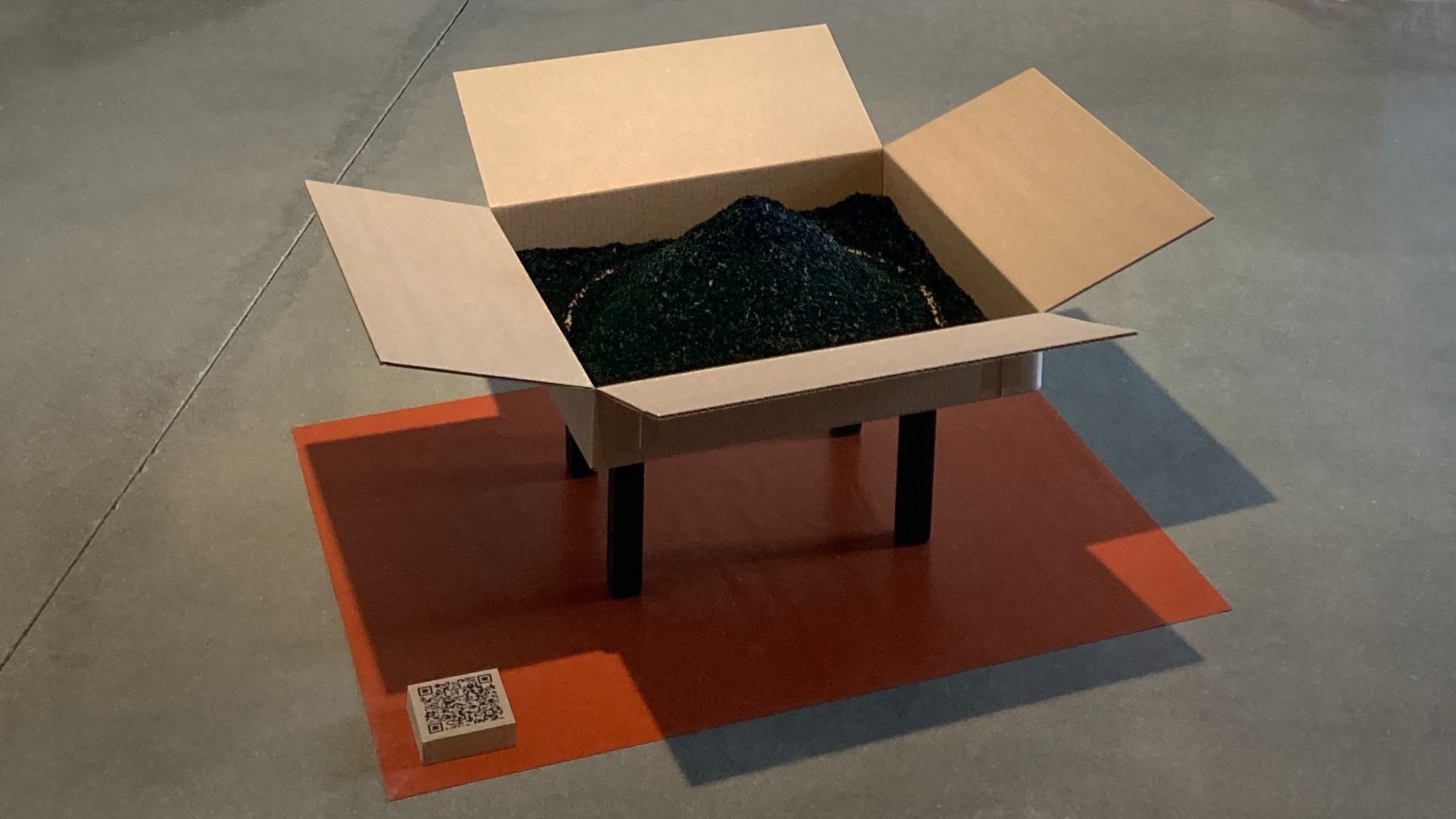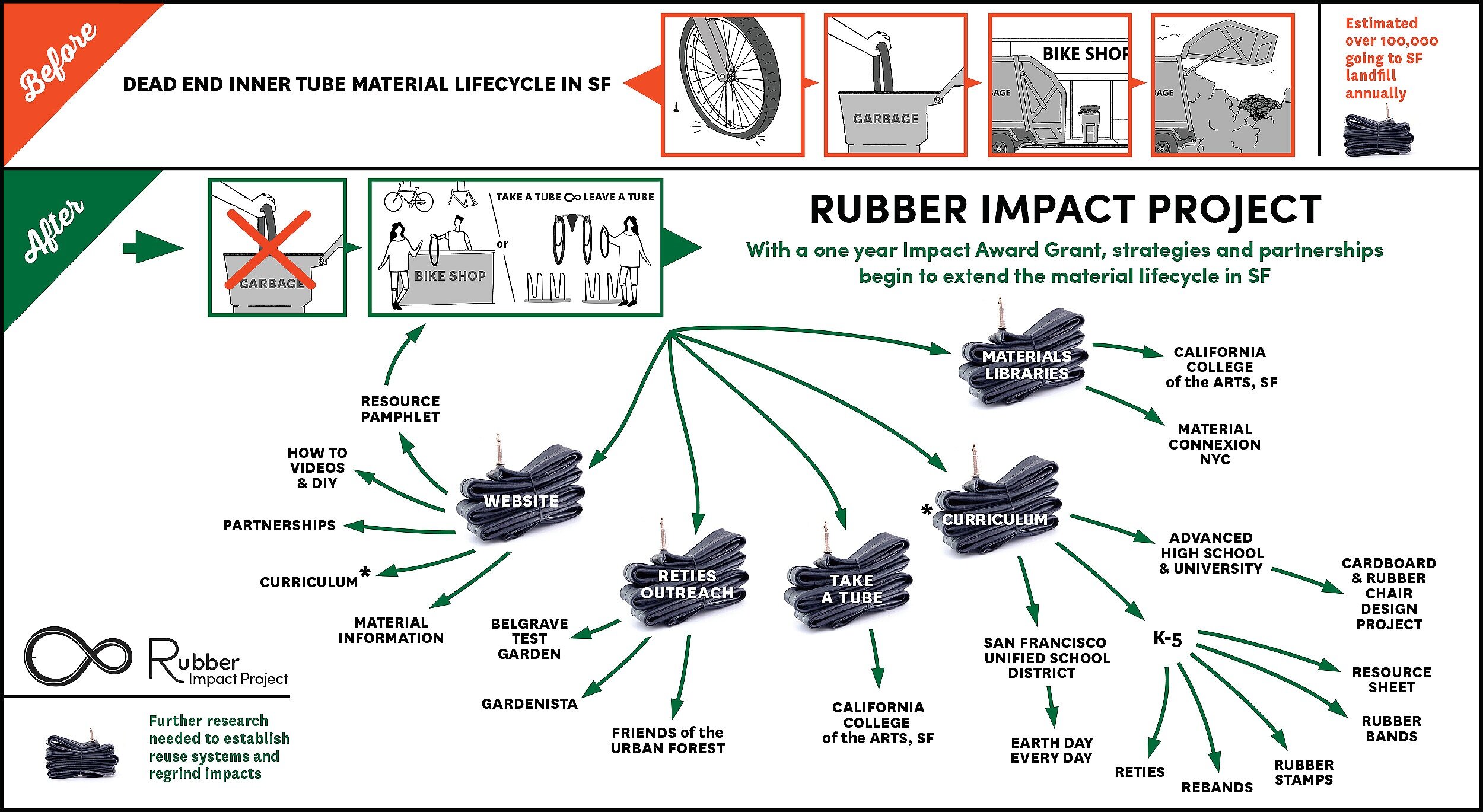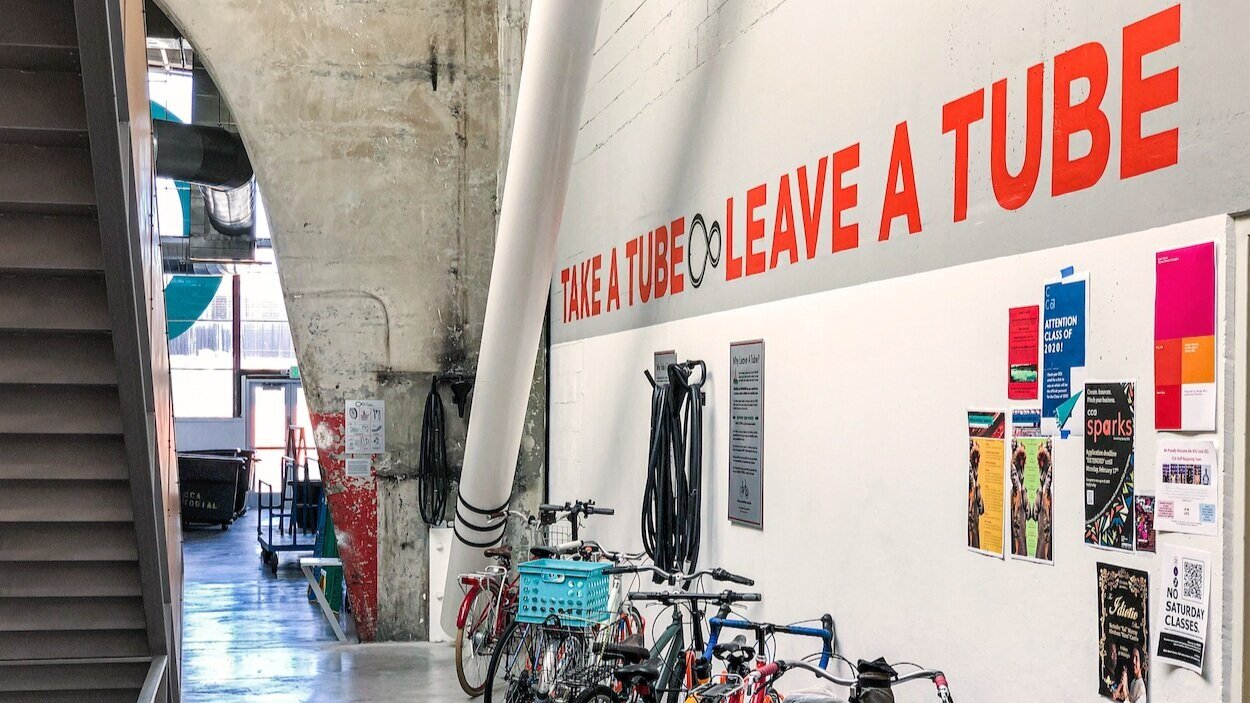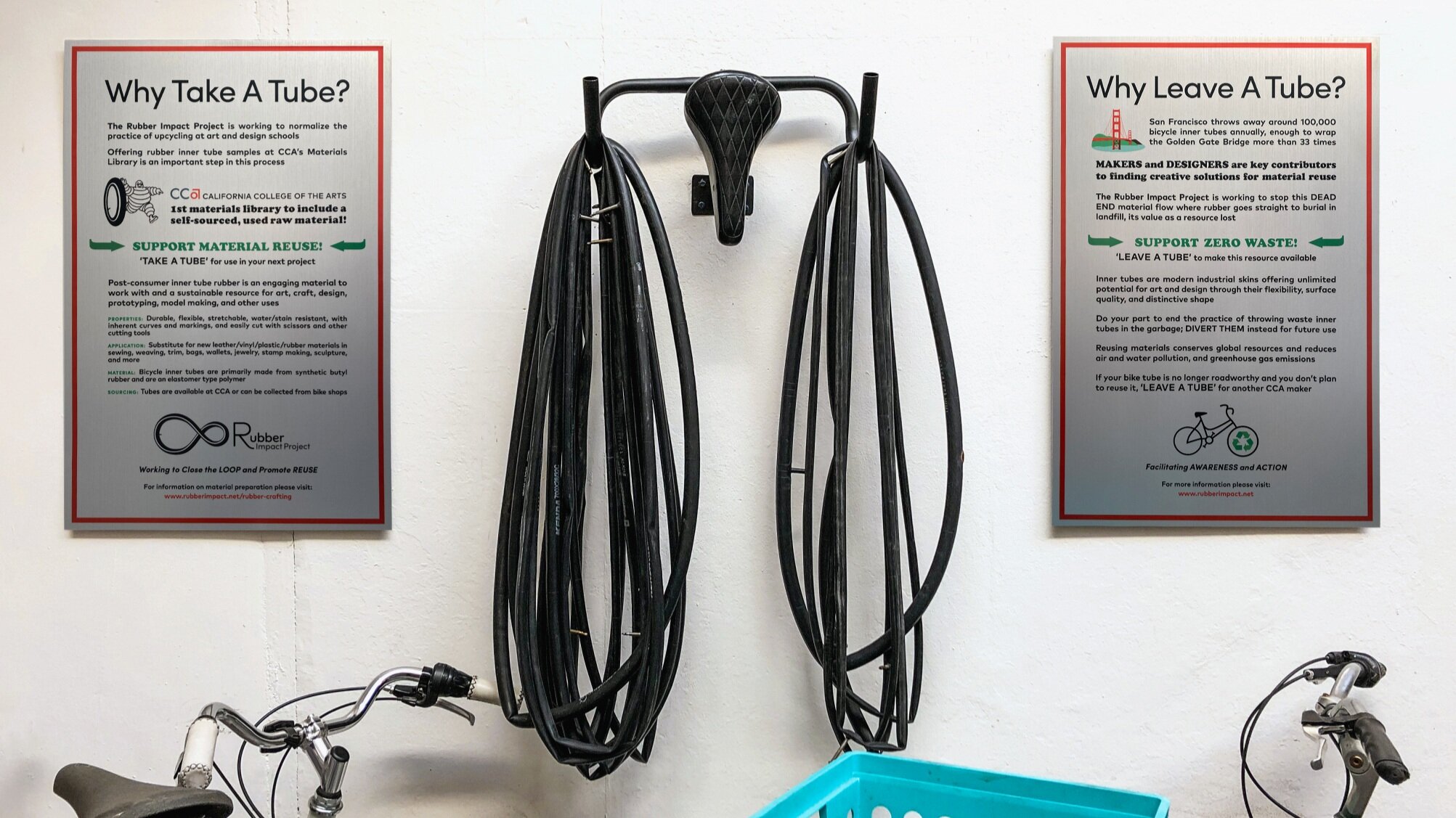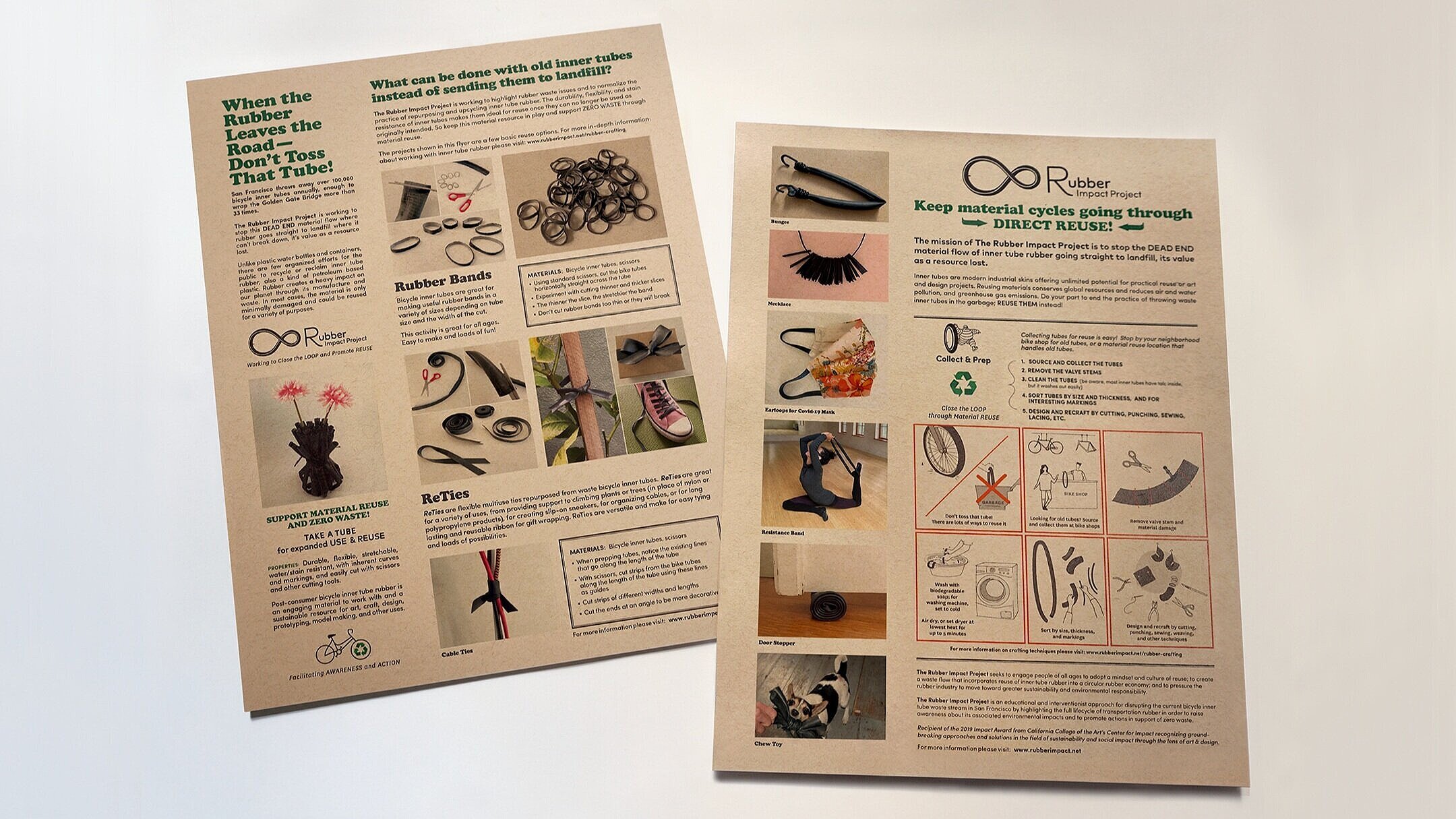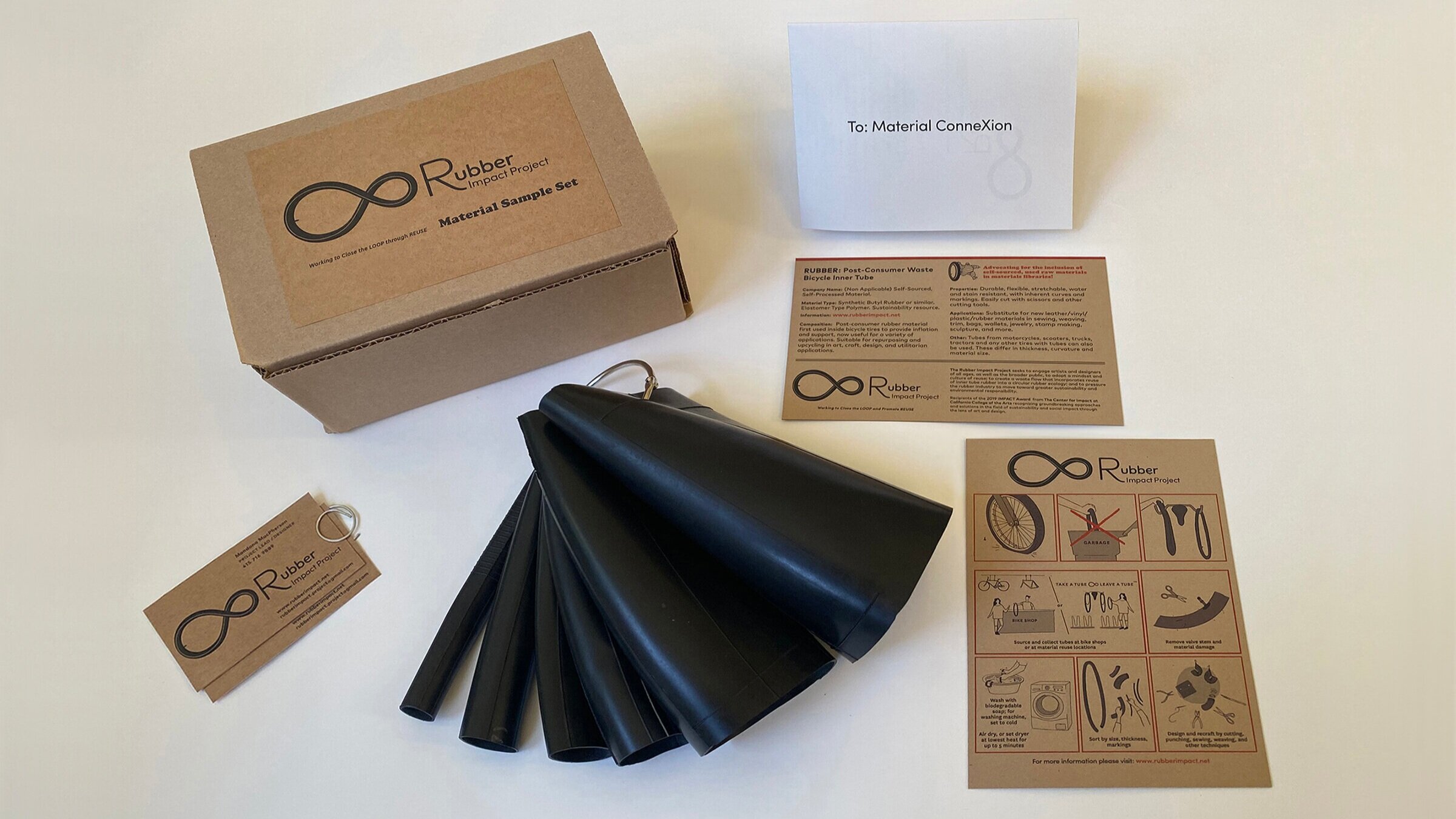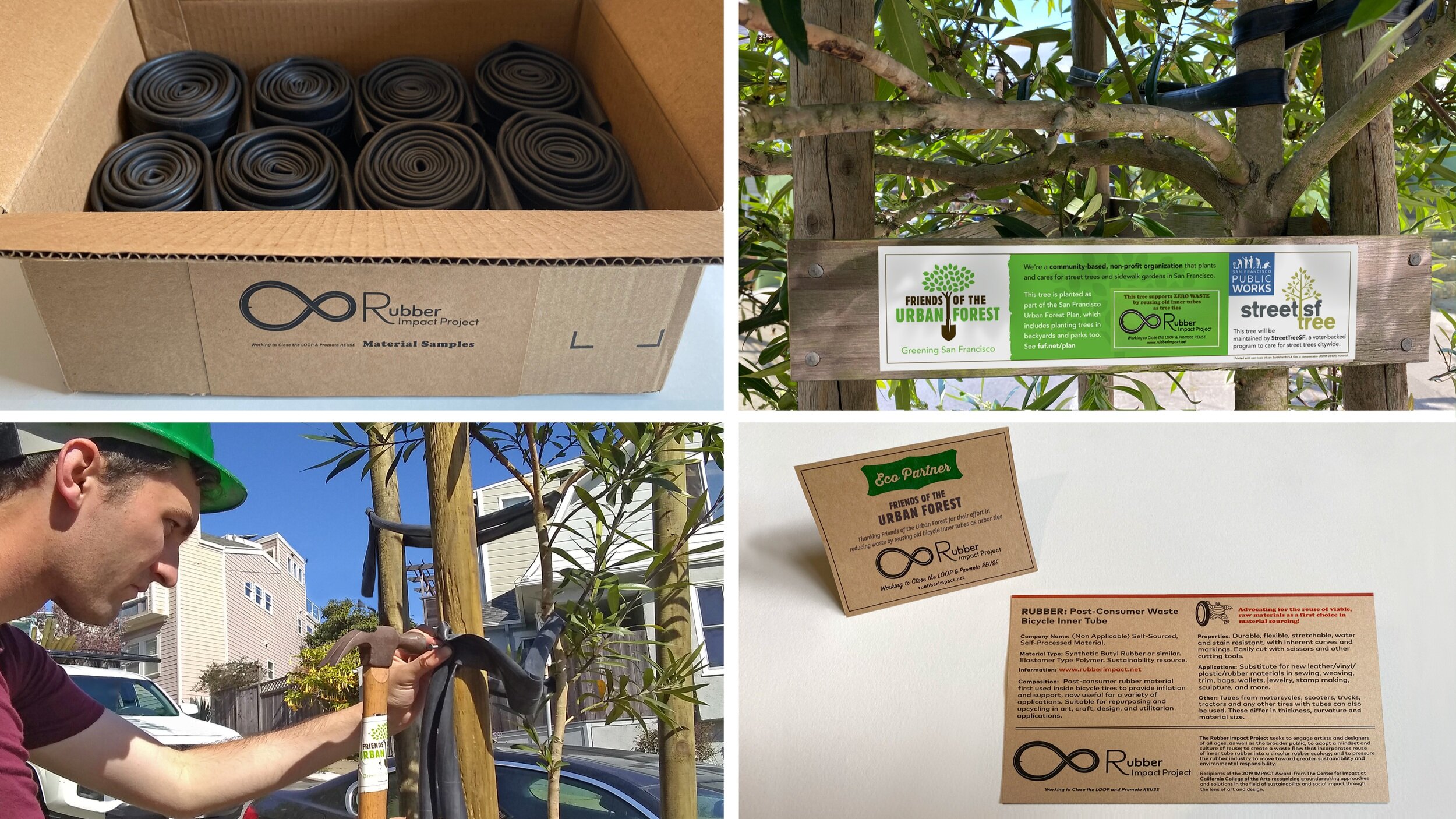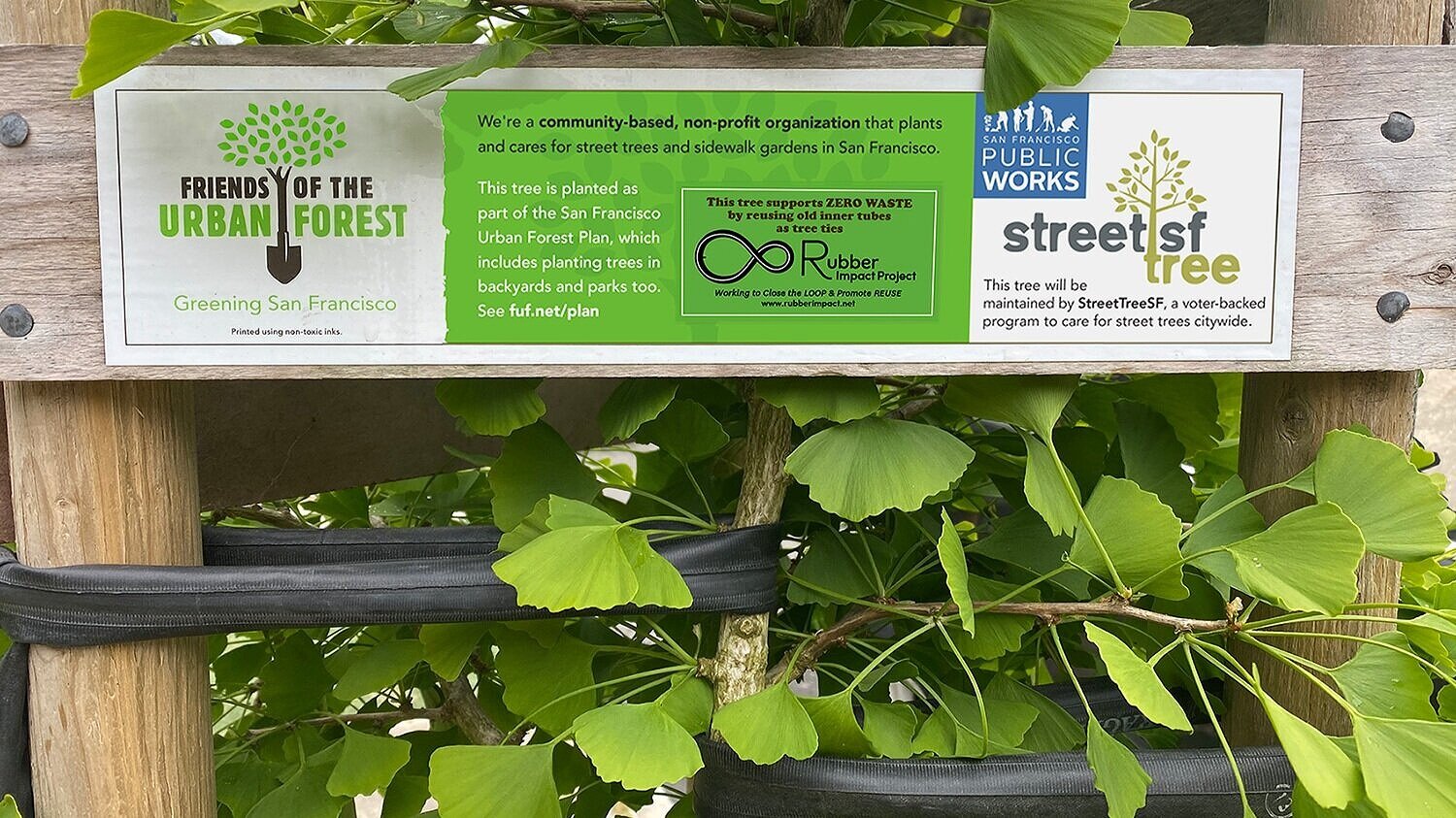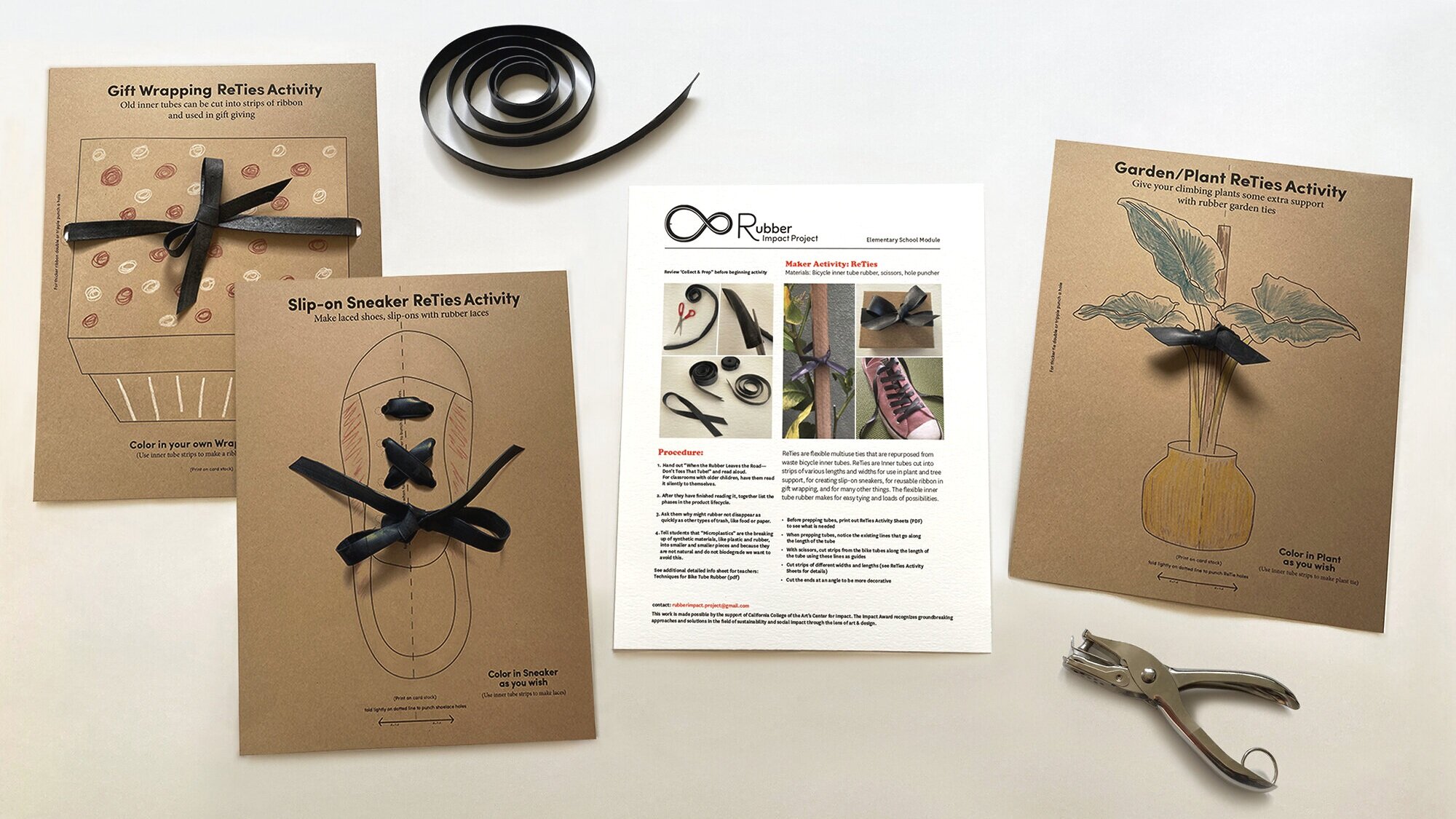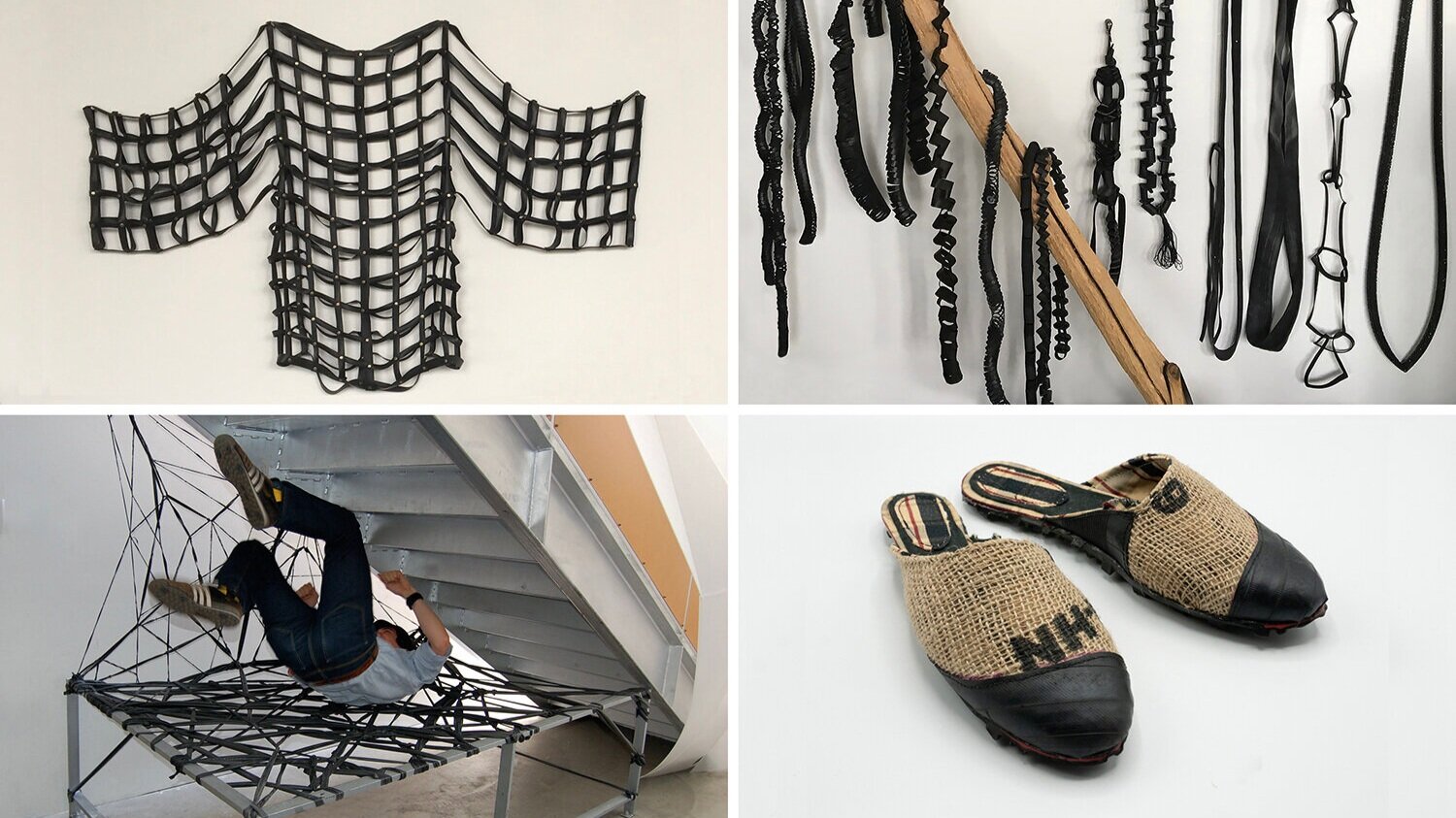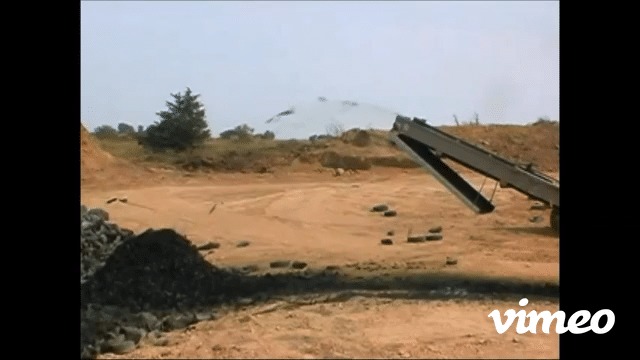Working to Promote Material Sustainability
through Awareness and Action
The Rubber Impact Project utilizes art and design activism to draw attention to transportation rubber issues, including environmental impacts, material responsibility, reuse opportunities, and dichotomies in the allure and danger of materials. We draw from our shared interest in how art and design can reshape culture.
The goal is to shift the public’s mindset towards a pattern of appropriate upcycling and reuse; to disrupt the current bicycle inner tube and tire waste stream in favor of a waste flow that keeps inner tubes and tires in a circular rubber economy; and to pressure the transportation rubber industry to move toward greater material sustainability.
Recipients of the 2019 Impact Award and Fellowship from California College of the Arts Center for Impact
Selected to exhibit at the Center for Maine Contemporary Art 2023 Biennial. MacPherson and Obrecht created a 30’ x 12’ art installation. A museum context offers a unique opportunity to employ an arts activism approach to highlight the materiality, the impacts, and the opportunities of transportation rubber. Follow this link and scroll down to take a virtual tour of the exhibit.
Material ConneXion, included RIP’s waste inner tube rubber sample set in their New York City library, the largest library of innovative, sustainable materials. This was the first inclusion of a self sourced waste material and further legitimized self-sourcing for direct reuse.
Click to view Material Catalog
The Rubber Impact Project is a collaboration between Mandana MacPherson and Gigi Obrecht. Our work has been presented at sustainability conferences, longlisted for the International Dezeen Design Awards, installed on college campuses, included in SFUSD curricular offerings, and exhibited at the Center for Maine Contemporary Art.
-Click to enlarge Flow Chart Infographic
-10 minute video slideshow presented at the 2021 On Sustainability Research Network’s International Academic Conference in Amsterdam
Infographic: Inner Tube Lifecycle for a Circular Transportation Rubber Economy


